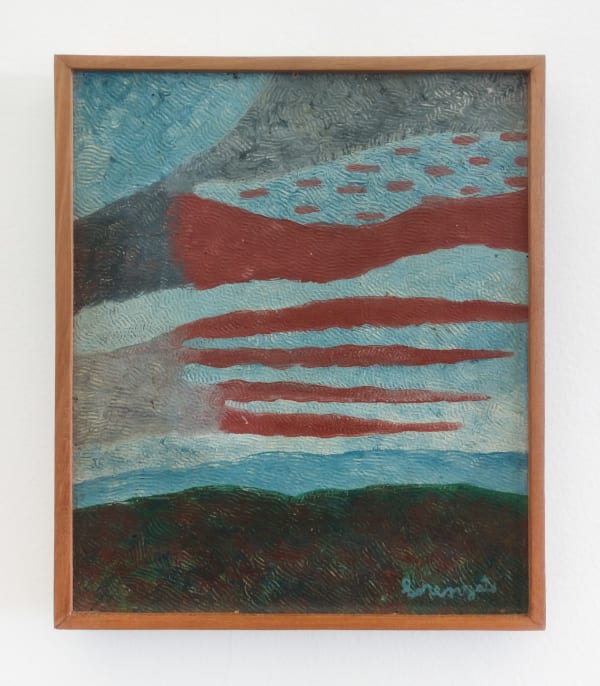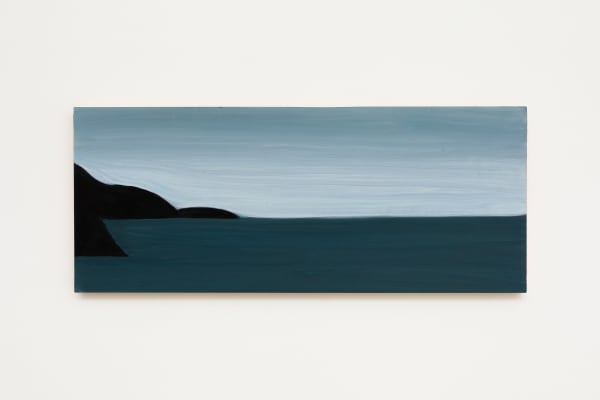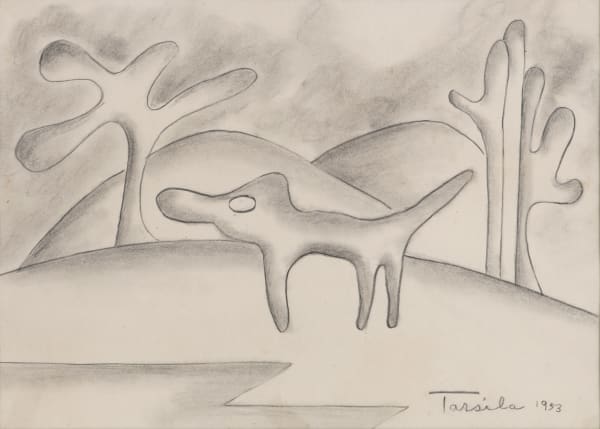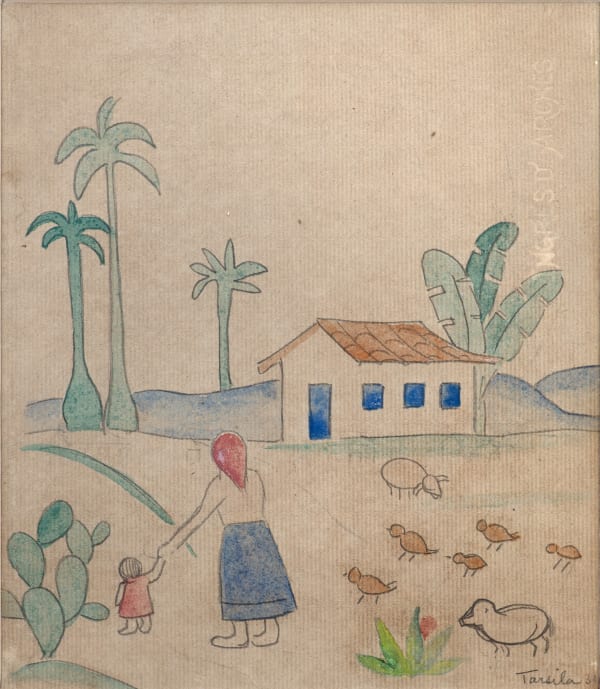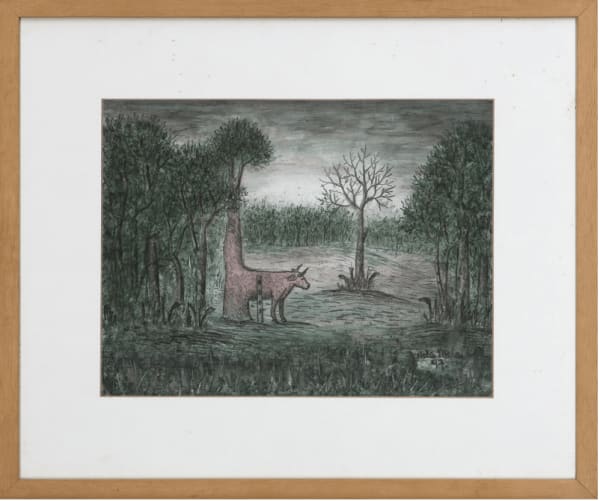Landscapes of the South Group Exhibition
Jan 30 - Apr 30, 2020
Mendes Wood DM is pleased to present Landscapes of the South, a group exhibition themed around the representation of landscapes in South America. Comprised of works made between 1659 and 2019, the works on view were made by early European colonizers in Brazil, modernist Brazilian masters who sought to subvert the vision of said colonizers by building a national artistic language, and contemporary South American artists who reflect on the notion of landscape itself, beyond its political referents.
The exhibition features works by Frans Post (Netherlands, 1612-1680), Friedrich Hagedorn (Poland, 1814-1889), Henri Nicolas Vinet (France, 1817-1876), Nicolau Antonio Facchinetti (Italy, 1824-1900), Giovanni Battista Castagneto (Italy, 1851-1900), Tarsila do Amaral (Brazil, 1886-1973), Alberto da Veiga Guignard (Brazil, 1896-1962), Alfredo Volpi (Italy, 1896-1988), Amadeo Luciano Lorenzato (Brazil, 1900-1995), Jose Pancetti (Brazil, 1902-1958), Miguel Bakun (Brazil, 1909-1963), and Hélio Melo (Brazil, 1926-2001). In addition, the exhibition includes works by the contemporary Latin American artists Patricia Leite (Brazil, 1955), Federico Herrero (Costa Rica, 1978), Daniel Correa Mejía (Colombia, 1986), Adriano Costa (Brazil, 1975), Marina Perez Simão (Brazil, 1981), Alvaro Barrington (Venezuela, 1983), and Lucas Arruda (Brazil, 1983).
The older among these artists guided the emergence of a national artistic practice, some of them teaching at recently established Brazilian academies. The work of the European painters who traveled to Brazil is a reminder that to paint is also to colonize. Prior to the mid 20th century, beyond its coastal cities, Brazil was still mostly uncolonized and inhabited by indigenous and runaway enslaved peoples. Painting was a way of domesticating the continent’s frontier. Their work, placed against that of contemporary artists, invites reflections on the ways in which we relate to landscapes today, both geopolitically and psychologically. Environmental and territorial concerns shape how we perceive and manage our environment; art translates these questions into the aesthetic realm. Although the works exhibited exist within their own very unique habits and palettes, we are gifted a glimpse into the palpable connections and conversations of a shared and ever-shifting South American landscape.
-
 Amadeo Luciano Lorenzato, Untitled, undated
Amadeo Luciano Lorenzato, Untitled, undated -
 Friedrich Hagedorn, Untitled, n. d.
Friedrich Hagedorn, Untitled, n. d. -
 José Pancetti, Praia do Chega Nego, 1955
José Pancetti, Praia do Chega Nego, 1955 -
 Patricia Leite, Untitled, from Praias series, 2015
Patricia Leite, Untitled, from Praias series, 2015 -
 Henri Nicolas Vinet, A Mountain Stream in the Rainforest Above Rio de Janeiro, n.d.
Henri Nicolas Vinet, A Mountain Stream in the Rainforest Above Rio de Janeiro, n.d. -
 Tarsila do Amaral, Paisagem antropofágica, 1953
Tarsila do Amaral, Paisagem antropofágica, 1953 -
 Tarsila do Amaral, Cena de colônia na fazenda (verso: Pé de café com colono carpindo), 1931
Tarsila do Amaral, Cena de colônia na fazenda (verso: Pé de café com colono carpindo), 1931 -
 Tarsila do Amaral, Boi na paisagem, 1920s
Tarsila do Amaral, Boi na paisagem, 1920s -
 Adriano Costa, Landscape, 2016
Adriano Costa, Landscape, 2016 -
 Miguel Bakun, Paisagem | Landscape, 1950's
Miguel Bakun, Paisagem | Landscape, 1950's -
 Tarsila do Amaral, Paisagem com bichos antropofágicos, 1930
Tarsila do Amaral, Paisagem com bichos antropofágicos, 1930 -
 Hélio Melo, Untitled, 1997
Hélio Melo, Untitled, 1997 -
 Hélio Melo, Untitled, 1997
Hélio Melo, Untitled, 1997 -
 Alberto Da Veiga Guignard, Paisagem de Sabará, 1956
Alberto Da Veiga Guignard, Paisagem de Sabará, 1956 -
 Lucas Arruda, Untitled (from the Deserto-Modelo series), 2019
Lucas Arruda, Untitled (from the Deserto-Modelo series), 2019 -
 Frans Post, Franciscan Convent of Igaraçu, 1659
Frans Post, Franciscan Convent of Igaraçu, 1659 -
 Nicola Antonio Facchinetti, Paqueta Cove, 1887
Nicola Antonio Facchinetti, Paqueta Cove, 1887 -
 Miguel Bakun, Untitled, 1950's
Miguel Bakun, Untitled, 1950's -
 Giovanni Battista Castagneto, Marinha com pedras, n.d.
Giovanni Battista Castagneto, Marinha com pedras, n.d. -
 Giovanni Battista Castagneto, Marinha com barco ao fundo, 1897
Giovanni Battista Castagneto, Marinha com barco ao fundo, 1897 -
 Daniel Correa Mejía, The Moon Keeping Us Awake, 2019
Daniel Correa Mejía, The Moon Keeping Us Awake, 2019 -
 Alvaro Barrington, Yellow Hibiscus, 2018
Alvaro Barrington, Yellow Hibiscus, 2018 -
 Federico Herrero, Untitled, 2018
Federico Herrero, Untitled, 2018 -
 Alfredo Volpi, Untitled, 1940s
Alfredo Volpi, Untitled, 1940s -
 Patricia Leite, Amanhecendo, 2019
Patricia Leite, Amanhecendo, 2019 -
 Marina Perez Simão, Untitled, 2019
Marina Perez Simão, Untitled, 2019 -
 Henri Nicolas Vinet, Untitled, n.d.
Henri Nicolas Vinet, Untitled, n.d.

